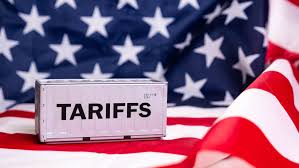
U.S. Budget Deficit Narrows in 2025 Amid Record Tariffs and Debt Payments

 :
| Updated On: 17-Oct-2025 @ 4:18 pm
:
| Updated On: 17-Oct-2025 @ 4:18 pmSHARE
The U.S. Treasury Department reported the federal budget deficit for 2025 edged down, mainly because record-breaking tariff revenues offset record payments on the fast-increasing national debt. The budget deficit was $1.78 trillion, which is a decrease of $41 billion, or 2.2%, from fiscal 2024. Although still near historic levels, the deficit would have been much greater without a huge increase in customs fees and a record September surplus of $198 billion.
One of the major contributing factors to the decrease in deficit was President Donald Trump's tariffs, which greatly increased revenues. Tariff revenues accounted for $202 billion for the year, a 142% increase over 2024. In September alone, tariff payments exceeded $30 billion, an increase of 295% over the same month last year. These revenues mitigated somewhat the financial effect of expanding national debt interest payments, which also hit record highs.
The deficit-as-a-percentage-of-GDP ratio is 5.9%, a first below 6% since 2022. Normally, the ratio is 3% in good times and increases when times are tough. Treasury Secretary Scott Bessent pointed out that the Congressional Budget Office was estimating a deficit-as-a-percentage-of-GDP ratio below 6% and added that the government is moving toward decreasing both debt and deficit burdens over time.
The growing national debt had a significant impact on federal interest payments. Total interest payments exceeded $1.2 trillion, setting a record and nearly $100 billion higher than in 2024. Net interest payments, excluding income earned by the Treasury from its investments, totaled $970 billion. This figure surpassed defense spending by $57 billion and ranked only behind Social Security, Medicare, and other health care costs in terms of federal expenditures. The swelling burden of interest is only a highlight of the problems presented by the $38 trillion national debt, which keeps growing even as attempts are made to shore up the fiscal position.
The earlier tariffs in the year caused consternation, with detractors arguing they would fuel inflation and dampen demand from consumers, pushing economic growth lower. Though some price hikes have been witnessed among tariff-sensitive products, impacts have largely been incremental. Federal Reserve authorities suggested that they would reduce the benchmark interest rate even lower, anticipating any inflationary pressures as transient. The existing federal funds rate is 4.00% to 4.25%, highlighting the Fed's conservative strategy in regulating economic stability.
The fiscal year for the government ended in September, with the total collections of revenues amounting to $5.2 trillion during the previous 12 months, whereas the total expenditure was more than $7 trillion. Although there was a huge overall deficit, the joint effect of strong tariff collections and short-term fiscal surpluses softened the financial deficit to some extent, giving a slight relief to the debt burden while pointing towards continued issues with national fiscal commitments.
In summary, the 2025 U.S. budget shortfall illustrates an intricate interaction among trading policies, debt payments, and federal sources of income. Although tariffs enormously contributed to revenue and assisted in lowering the deficit, the federal government still has huge interest payments on the national debt. The reduction in the deficit, alongside a deficit as a percentage of GDP below 6%, reflects incremental improvement, but long-term fiscal sustainability will involve prudent control of expenditure, income, and debt levels in order to realize sustainable economic performance.